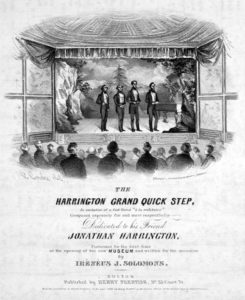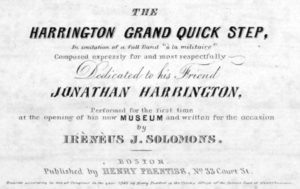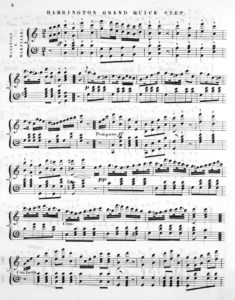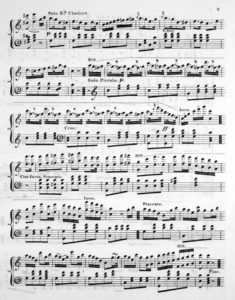I originally wrote this for a meeting of the New England Magic Collectors Association (of which I am a member and Editor of The Yankee Magic Collector), but it might be of interest to some of my readers. Since, I have been remiss in posting in the last couple of months (I will make up for that this fall), at least this provides something new for my loyal subscribers. More anon!
>>>>>>>>>>>>>>>>>
For whatever reason, you have a passing interest in an area has been fanned from passing fancy to obsessive fascination. I can’t pretend to understand why people first get involved in research of a topic, but I hope I can help those of you so infected with some thoughts on chasing the will o’ wisp without getting lost in the process.
SPREAD THE WORD
The biggest tip I can give about research is to not be shy about your area of interest. Spread the word by any channel necessary about the subject you are interested in. If you broadcast your interest by every possible means, you will find others who either share it or have a related interest that overlaps with yours. These people will share leads with you if/when they come across them, but only if they know what you are looking for. Reach out to others and be sure to reciprocate.
NATURE OF THE SOURCE
A subject area is about primary and secondary sources. While secondary sources are great for leads, they can be inaccurate or even tainted with bias by the source. Whenever possible, try to gather primary sources to back up the “story.” Some of the best primary sources are legal documents (deeds, court records, etc.) and newspaper advertisements/articles. Take “autobiographical” sources with a grain of salt as they often are embellished.
ONLINE
I’m sure others have gone over the big online resources, both general (loc.gov, google, archives.com, newspapers.com) and specific (conjuringarts.org, nemca.com, magicana.com). A few lesser-known ones might be of use as well. I have found abebooks.com and archive.org to be surprisingly helpful (and that don’t always show up in google). Both ebay and google have tools that you can set up to receive notifications of new postings that relate to your subject matter. This is particularly helpful, freeing you up to research in other areas without being too concerned about missing something.
If you or your spouse/partner are enrolled in college, you might be surprised that you have access to an enormous number of online databases and interlibrary loan opportunities by logging into your educational account. If you are not currently a student, you can still take advantage of the search capabilities by visiting your local university library and searching onsite. Many local libraries can get the resources through interlibrary loan (you will have to have a library card) and most good-sized university libraries have microfiche on file from the Library of Congress. I have found scripts
ASK YOUR FRIENDS/MAKE SOME NEW ONES
Remember what I said about reaching out? That includes by phone. If you read an article online or in a publication and the author looks like they might have some acquaintance, call or email them and see what they didn’t include that might have some bearing on your interest. You might be surprised at their response. Established authors are thirsty for more information about their subject and often deeply passionate about sharing their acquired knowledge.
ON FOOT
If your subject is connected with a particular town/city, contact their local library, historical society, county registry of deeds, or town/city clerk to pull records associated with a property or individual. Telephone and email are less effective in these settings, often it will take a personal visit. In some instances, you will not be able to borrow materials through a library and you will have to travel to visit their special collections or the collection of a private collector.
ORGANIZING YOUR RESEARCH
Over time, you will find you have collected a lot of information on your subject. Not only is the information important, but the source is as well. I generally scan all of the primary resources and create a chronological PDF that I can quickly and efficiently refer back to. I organize and categorize my research in an Excel file where I categorize the source, the date gathered, the date referenced (show dates, census data etc.) any specifics/highlights of the source and a “query” column where I jot down thoughts about other possible leads associated with that citation. Some day, someone will ask you to support your statements. Best if citations become part of your research process and you are ready to send them to the source you unearthed.
BROADEN YOUR APPROACH
Nothing exists in a vacuum. The subject of our research exists in a broader milieu; the context of their time and location. When I researched Jonathan Harrington and began preparations for performing as him, I developed another spreadsheet with a timeline of his life and then researched aspects of the culture of the time. I included large-scale cultural and political events (the Civil War, the development of technology such as the light bulb) as well as more personal ones (what was it like to live in his community, what types of clothing did he wear, food did he eat, books did he read, how much did it cost to own property, how long did it take to travel ten miles), etc. Context helps to ground your subject in the broader world and aids in bridging the gap when communicating about your interest.
I hope these thoughts are helpful in your pursuit. Remember, don’t be shy about expressing your interest. By the way, if you come across anything related to troublewit, Jonathan Harrington (1811-1881) or the three shell game, please don’t hesitate to contact me. I might have something of interest to share about your obsession…



